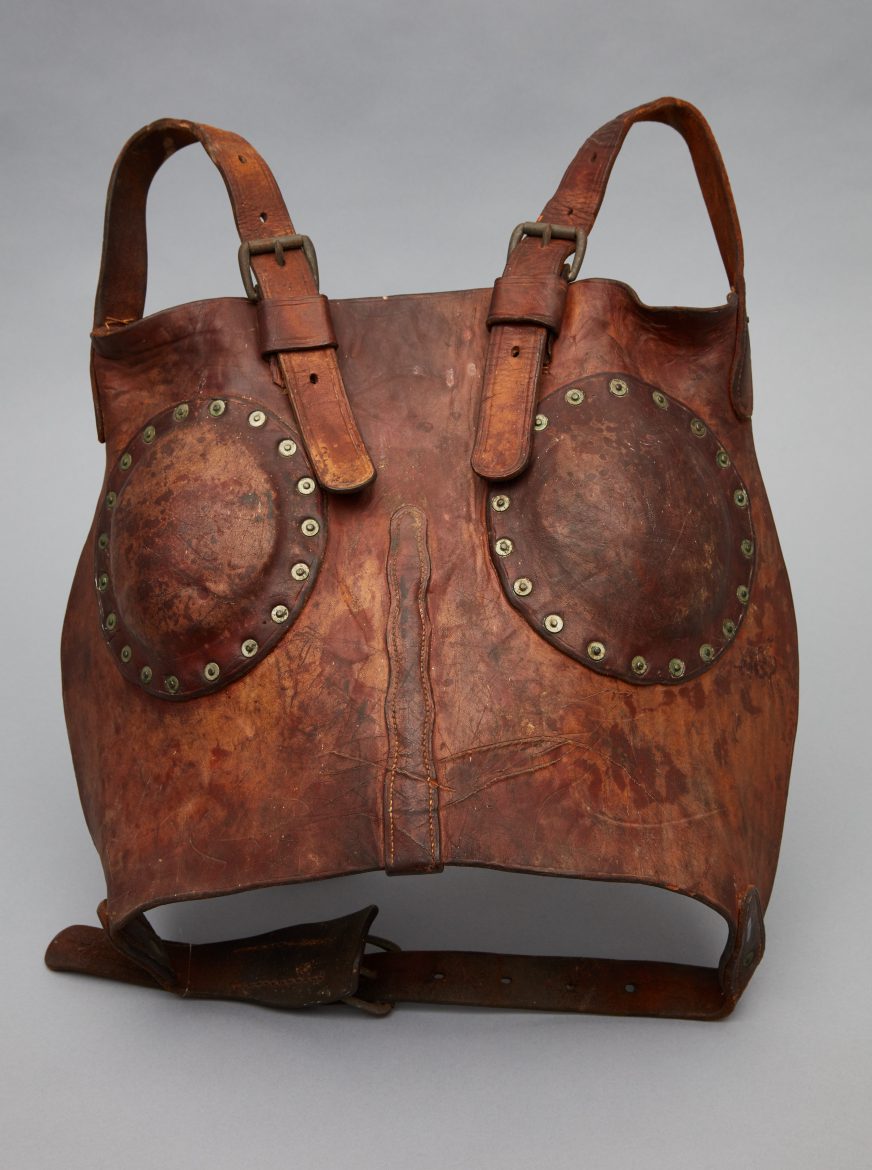
Bull Blinder, Church Family, Canterbury, NH, 1850-1890, Shaker Museum | Mount Lebanon, 1952.4625.1, John Mulligan, photographer.
Sometimes objects in the Shaker Museum | Mount Lebanon collection are just plain fun, as with the object at hand – a leather contraption that seems as if it would be more at home in an Icelandic legend or on a Viking battlefield than in a Shaker community. (It’s especially fun to solicit guesses from visitors as […]

Bull Blinder, Church Family, Canterbury, NH, 1850-1890, Shaker Museum | Mount Lebanon, 1952.4625.1, John Mulligan, photographer.
Sometimes objects in the Shaker Museum | Mount Lebanon collection are just plain fun, as with the object at hand – a leather contraption that seems as if it would be more at home in an Icelandic legend or on a Viking battlefield than in a Shaker community. (It’s especially fun to solicit guesses from visitors as to the purpose of this object) The device, however, is a perfect fit for a Shaker farm. It was called a bull blinder and was placed over the head of a bull to prevent him from seeing anything. Bulls are well-known for their unpredictable and sometime aggressive temperament. Moving these one-ton, often dangerously-horned animals from place to place always has to be done with caution, and when potential mates or competing bulls are in view, the challenge increases. When Shaker Museum | Mount Lebanon acquired the bull blinder from the Shakers at Canterbury, New Hampshire, Eldress Emma B. King told the Museum staff that it was used, “to prevent the bull from trundling the cow.” Trundling or not, Carl Friesch, a Midwestern collector of antique farm equipment, explained, “When a bull’s head is down, that’s when he does damage.” A commonly used commercially-made bull blinder, patented in the 1920s by Henry Masbruch for the Russell Manufacturing Company, Platteville, Wisconsin, had small slits at the bottom of the eye cups allowing the bull to see to graze but kept his head upright when moving around – a position generally minimizing any mischief. The Shakers’ blinder does not have slits and relied solely on not allowing the bull to see anything as he was moved from barn to pasture or pasture to pasture. At the North Family, Mount Lebanon, bulls were kept in the east end of the Great Stone Barn. Bulls had a separate doorway leading past as few cows as possible and directly into what was called the “bull pasture” – a pasture enclosed with a substantial stone wall.

Bull in Commercial Blinder, Rural Ohio, 2016, photograph by Gloria Jarrett, from her blog, Amish Faith, Family, and Furrow, http://www.amishfaithfamilyfurrow.com/2016/04/beware-bull.html